-
Product Name
MOK Polyclonal Antibody
- Documents
-
Description
Polyclonal antibody to MOK
-
Tested applications
WB, IHC
-
Species reactivity
Human, Mouse, Rat
-
Alternative names
MOK antibody; RAGE antibody; RAGE-1 antibody; RAGE1 antibody; STK30 antibody; MOK protein kinase antibody
-
Isotype
Rabbit IgG
-
Preparation
Antigen: Recombinant fusion protein containing a sequence corresponding to amino acids 1-230 of human MOK (NP_055041.1).
-
Clonality
Polyclonal
-
Formulation
PBS with 0.02% sodium azide, 50% glycerol, pH7.3.
-
Storage instructions
Store at -20℃. Avoid freeze / thaw cycles.
-
Applications
WB 1:500 - 1:2000
IHC 1:50 - 1:200 -
Validations
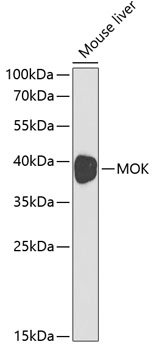
Western blot - MOK Polyclonal Antibody
Western blot analysis of extracts of mouse liver, using MOK antibody at 1:1000 dilution.Secondary antibody: HRP Goat Anti-Rabbit IgG (H+L) at 1:10000 dilution.Lysates/proteins: 25ug per lane.Blocking buffer: 3% nonfat dry milk in TBST.
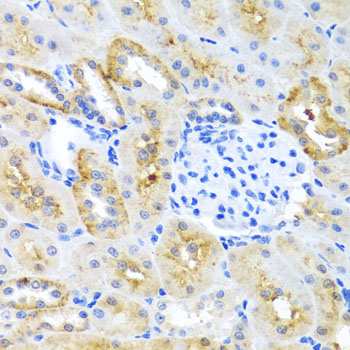
Immunohistochemistry - MOK Polyclonal Antibody
Immunohistochemistry of paraffin-embedded mouse kidney using MOK antibody at dilution of 1:100 (40x lens).
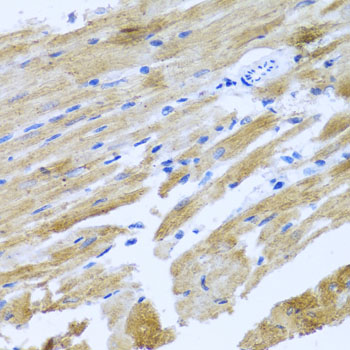
Immunohistochemistry - MOK Polyclonal Antibody
Immunohistochemistry of paraffin-embedded rat heart using MOK antibody at dilution of 1:100 (40x lens).
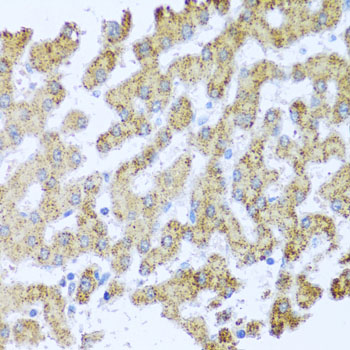
Immunohistochemistry - MOK Polyclonal Antibody
Immunohistochemistry of paraffin-embedded human liver using MOK antibody at dilution of 1:100 (40x lens).
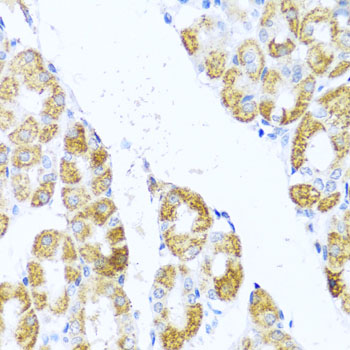
Immunohistochemistry - MOK Polyclonal Antibody
Immunohistochemistry of paraffin-embedded human stomach using MOK antibody at dilution of 1:100 (40x lens).
-
Background
Able to phosphorylate several exogenous substrates and to undergo autophosphorylation. Negatively regulates cilium length in a cAMP and mTORC1 signaling-dependent manner.
Related Products / Services
Please note: All products are "FOR RESEARCH USE ONLY AND ARE NOT INTENDED FOR DIAGNOSTIC OR THERAPEUTIC USE"
